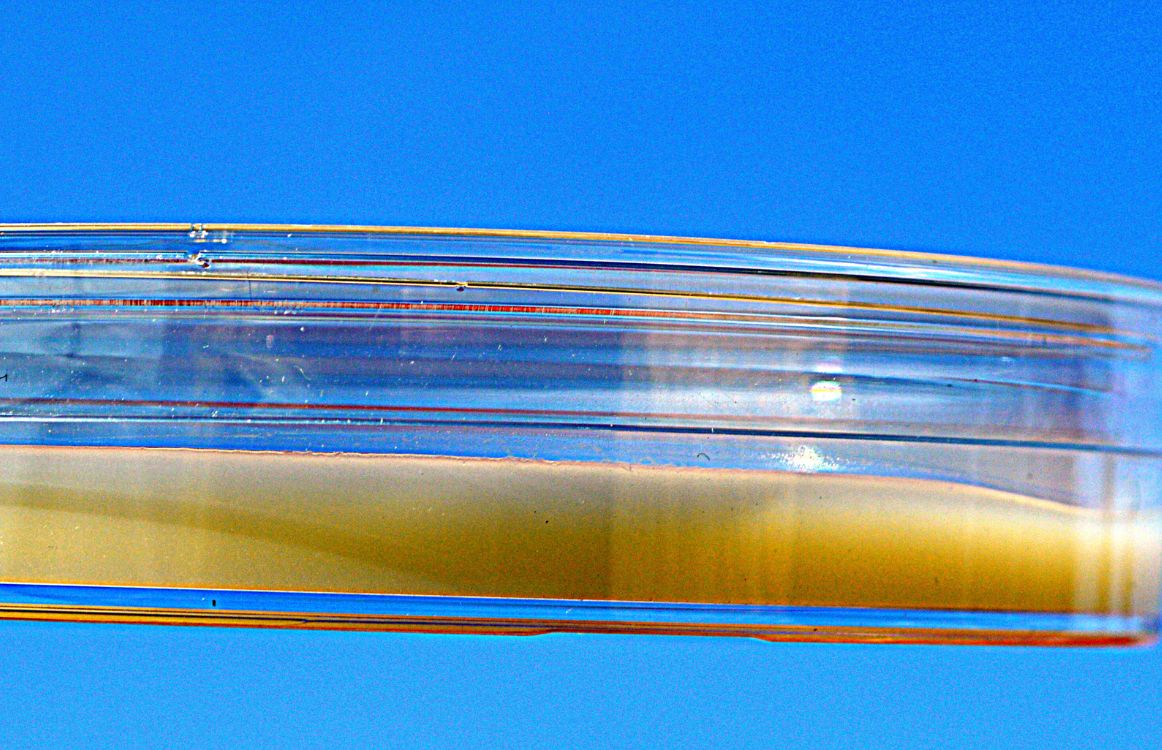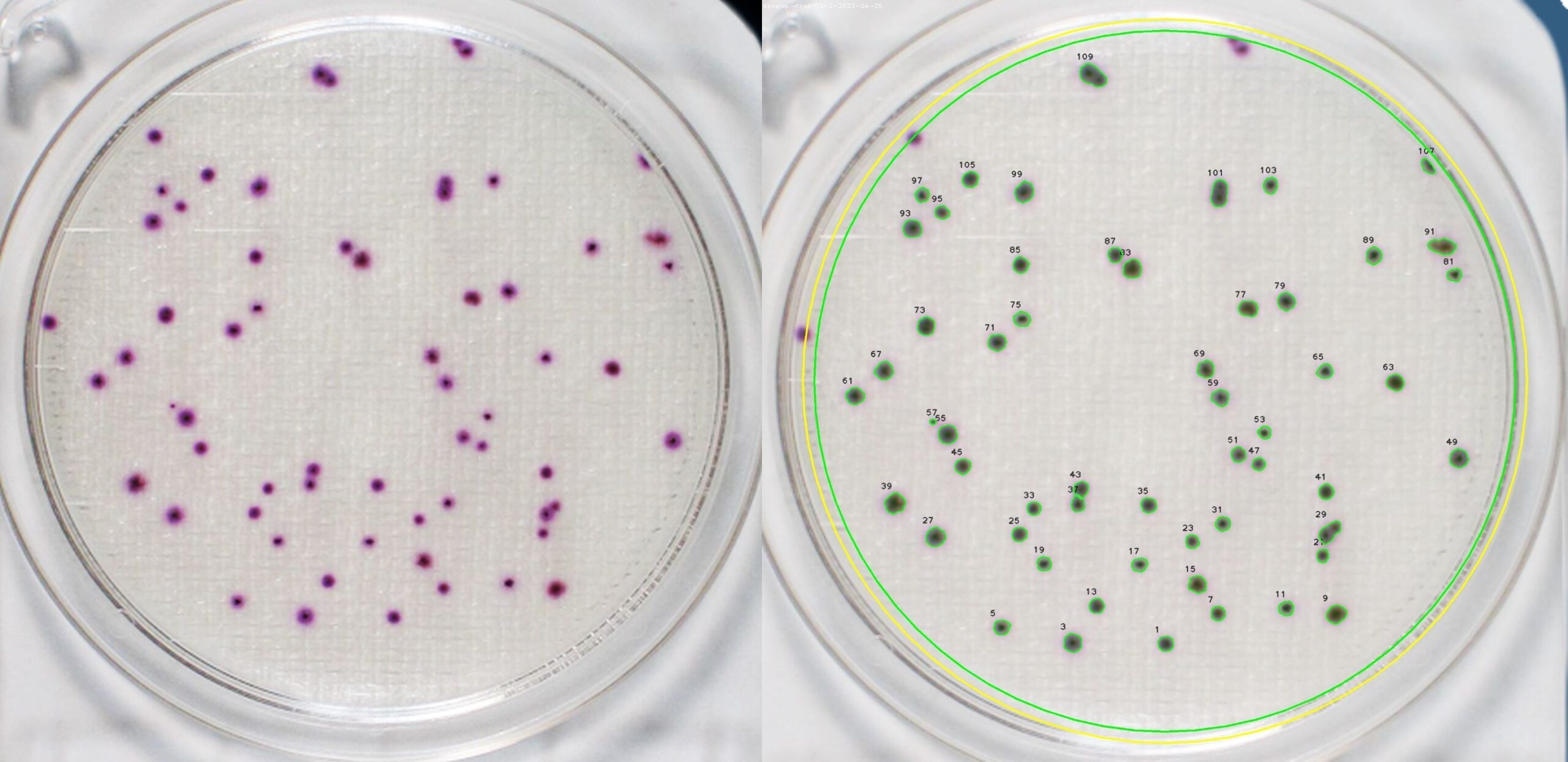The Gel Substance in a Petri Dish: What Is It?

The Petri dish is something we all worked with in high school, and maybe even college, depending on what classes you took. But the Petri dish is more than just a dish, right? The gel substance in a Petri dish: what is it, anyway?
Download here for free our comprehensive PDF Guide (19 pages) on How to Count Colonies on Agar Plates!
The Petri Dish
The Petri dish, which we are all so familiar with, was originally constructed of two pieces of glass, one slightly larger than the other, so the larger one fits as a lid over the smaller one, effectively trapping whatever is inside and creating a sterile environment.
Prior to the Petri dish, scientists had been using a glass bell jar. Essentially, they would take a plate of gelatin with a bacteria culture on it and then place a large glass bell jar on top. The problem came with studying the bacteria as it developed. Every time you wanted to look at the bacterial colonies under a microscope, you would have to remove the bell jar and expose the growing culture to the open air.
This process, as you can imagine, allowed for a ton of human error.
Then, during the late 1870’s, a bacteriologist named Julius Petri went to work as a military physician at the Imperial Health Office in Germany under Robert Koch, who at the time was the czar of bacteriology.
There, Petri conceived of what we now know today as the Petri dish. Though several other scientists were apparently also designing similar dishes to allow for better containment and study of bacteria, Petri is the one who got the credit, and the name stuck.
But what about that gelatin?
What Is Agar?
The gelatin inside the Petri dish is called agar, or agar agar. It is made of red algae boiled down until it becomes gelatinous.
Agar allows for a clean surface that will inhibit the growth of unwanted bacteria and allow for the growth of intended bacteria that is swiped upon it.
The History of Agar Use
Though gelatin has always been essential to the study of bacteria, as we need something to hold it in place, it was not always agar.
Any gelatinous substance would do, originally. And often meat extract was the easiest thing to access because it does indeed congeal and turn gelatinous. The problem is that not all bacteria grows well in the presence of meat proteins. It is also harder to store. Agar is a much better substance.
It was in fact another assistant of Robert Koch’s who introduced the concept of using agar as the gelatin in Petri dishes. Actually, it was that assistant’s wife, Fanny Hesse, who suggested it to her husband. He then brought the idea to his boss, and the rest is history.
It makes sense it would be a woman to make this discovery as red algae and agar are frequently used in the kitchen as gelatins for all types of dishes both savory and sweet.
More than Agar
But the truth is that what you see in a Petri dish, which today are made of plastic, is often much more than just agar. Each dish is usually also cultured with a nutrient on which the expected bacteria will thrive. Depending on the bacteria, you could be using a Petri dish with blood agar, nutrient agar, salt agar, or even chocolate agar. There exist various types of agar cultures, and each can be useful, depending on the bacterial colony being studied and counted.
An Automated Colony Counter Can Help

To that end, for bacteriologists, microbiologists, and other studying with Petri dishes and agar, more and more laboratories are turning to automated colony counting to help identify the number of CFUs growing in those Petri dishes.
Where once scientists had to remove the Petri dish from the incubator and take the time to mark each perceived colony with a black marker on the bottom of the dish, today that process is much easier.
The Oculyze Colony Counter allows you to upload an image of the bottom of the Petri dish and remove all potential for human error. You could have the number of colonies in seconds, and get those numbers onto your record sheet. This streamlining of the process frees you up to do more essential work in the lab.
Summing It All Up
In the end, the gelatin substance in a Petri dish, agar, makes all the difference in our ability to grow and monitor bacterial colonies under a microscope, as well as to count the colonies as they grow.
For help with colony counting, be sure to invest in a high pattern image recognition software that can save you time, energy, and money.
Are you an agar plate manufacturer / distributor? Enhance your product offering by providing your customers with an automated analysis for pre-poured agar plates, which eliminates the need for laborious manual counting! The Automated Counter developed by Oculyze can count colonies with high accuracy and speed, using only an uploaded image of a Petri dish.
Test our Colony Counter! Completely free of charge and with no commitment to purchase. Just please note that the recognition provided here is solely for demonstration purposes and may not accurately represent the performance of our product. Our customers receive customized recognitions tailored to their specific needs, which ensures high levels of accuracy for their plates.
Let artificial intelligence do the hard work for your customers. Want to know more? Contact us and we’ll be happy to help!
Sources:


